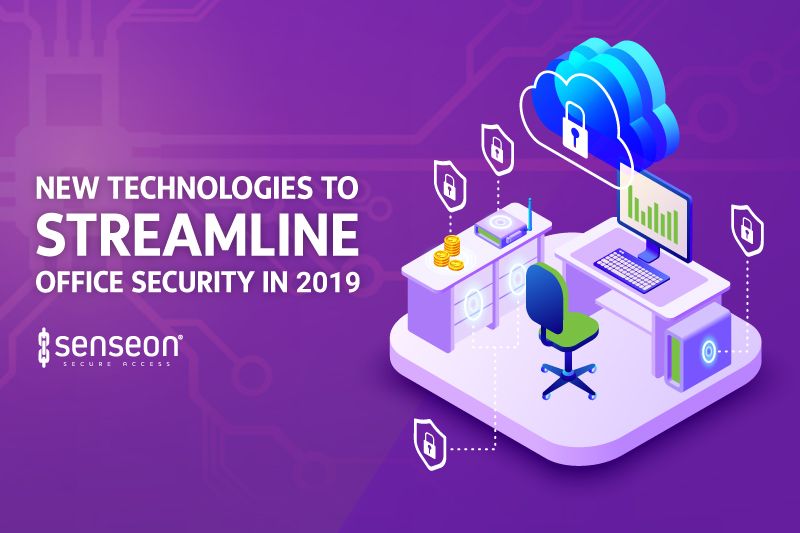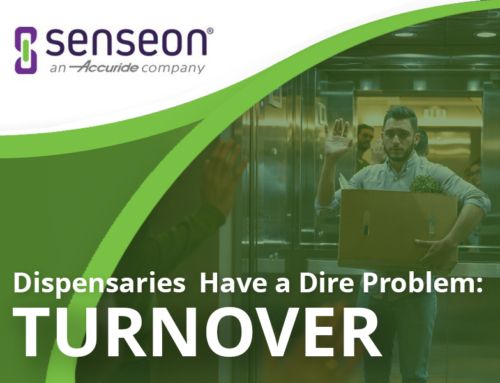The exponential pace of technology is transforming the financial services workplace on many fronts. The introduction of new methods and processes often comes faster than businesses can keep up. Between advancements in AI, robotics, and IT, staying abreast of the latest technologies can become a job within itself.
Ultimately, financial service businesses implement new technologies to reduce costs, improve corporate profitability, and create more efficient operations.
Technological advancements have disrupted old school practices and expanded security beyond video cameras and credential authentication into business operations. Rather than security only impacting entrance and exit protocols, it also applies to business continuity and operational efficiency.
New technology available in 2019, enables companies to streamline business operations, but also present new challenges. The following three areas have seen exponential shifts in operations due to advancements in technology.
Rethinking Meetings and Collaboration
Meetings no longer consist of a dozen high-level decision-makers meeting in a boardroom. Today’s meetings often include team members in different locations, arranged on short notice to collaborate through online channels. Advancements in video and audio conferencing allow anyone with a reliable internet connection or phone line to join a conference.
Employees, managers, contractors, and third-party vendors can jump on a video or audio conference to discuss and collaborate on projects. Increased reliance on the cloud and the availability of programs like Google docs have also helped transform collaboration. These programs allow multiple team members to work on a project, share changes, and discuss updates in real-time.
The use of these technologies enables businesses and project teams to work with specialists. For instance, companies can collaborate with experts from around the world without bringing them on as employees. Through new mediums, teams can share innovative ideas, improve the quality of collaboration, and increase productivity.
The increased streamlining of meeting schedules impact office security in two ways:
- It allows management and company leadership to discuss and make decisions about office security without physically gathering for a meeting. For example, an office manager can provide faster solutions by discussing security issues via secure video or audio conference lines.
- The drawback is that new channels of communication create another entry point the company must secure. When employees, third-party vendors, and contractors, tap into the company intranet or discuss proprietary matters, like security, over an internet connection, the company must secure those lines of communication. In addition to safeguarding the online portal, measures must secure the hardware used to access a video or audio conference. If someone accesses a conference with an infected computer, it could expose the company to a security breach
Cyber Security is Increasingly Vulnerable, and it is Increasing Vital to Protect Online Channels
Cybersecurity gets most of the attention when it comes to securing financial service offices. Companies employ more online resources to create less paper and a more streamlined process. While it’s a great initiative, it increases the vulnerability to a cyber-attack as more proprietary and sensitive data moves online. From customer information to employee passwords and identification, companies must continue to pour money into cybersecurity to remain ahead of cyber thieves who wish to access private information for personal gain.
“No matter what changes in the technological playing field, there will always be a need for robust, effective cyber security. Just about every company out there stores so much value online, that few things make more sense than investing in strong security and keeping it updated.” Ben Lee, co-founder of Rootstrap, a mobile app development company.
Like 2018, companies will spend record levels on IT and cybersecurity in 2019 to mitigate the risk of a cyber-attack and deal with the fallout of a security breach, should one occur.
Advancements in blockchain technology offer the potential to create secure and transparent platforms to combat threats from cyber thieves.
Reinventing Access Control
Advancements in access control, AI, and biometrics have transformed entrance and exit protocols. This transformation has exposed the limitations and vulnerabilities of traditional lock and keys. As electronic access controls dominate the market, companies find new technology streamline and integrate into the holistic approach to business operations.
Hank Monaco, VP of marketing at Johnson Controls, points out that access control decisions no longer fall directly under an organizations’ security department. Instead, a range of decision-makers, including IT professionals, bring value to the decision making process.
Monaco says, “As technology evolves and we get to that next phase I think these are the things that strategically businesses need to be thinking about – access control as a component of a more holistic security and business operations environment.”
The introduction of internet-based access control systems serves as a gateway to business data beyond credentials authorization, approval or rejection. A company can analyze meeting room utilization, personnel access to secure files, and time of heavy or slow usage.
These innovations provide both security and business intelligence. Moving access control from a security protocol to a way of managing and controlling secure environments. Integrated systems also provide streamlined access control for more efficient and cost-effective operations.
When selecting an access control system that functions as more than an authorization to secure entry, focus on systems that integrate with existing software and hardware for a more seamless approach to both security and operations management. As technology evolves in the access control space, it is also advantageous to think strategically about the next phase of access control. New technologies will continue to transform, adding more features that will apply to business operations as well as security.
Final Thoughts
The rapid growth in technology creates more opportunities for financial service businesses to operate more efficiently and streamline processes. Areas with the highest impact on office security include the approach to meetings and conversion to more online channels to discuss sensitive and proprietary information. Protecting online channels through cybersecurity can mitigate this risk. When reviewing access control protocols, consider a system that will serve as more than a replacement of a traditional lock, but as an operations management tool, able to provide valuable metrics. Able to identify areas for improvement while improving safety measures.
Utilizing the newest technologies available to secure buildings, offices, file cabinets, and drawers containing sensitive information is best accomplished by partnering with a cutting-edge company like Senseon for all your access control needs.






